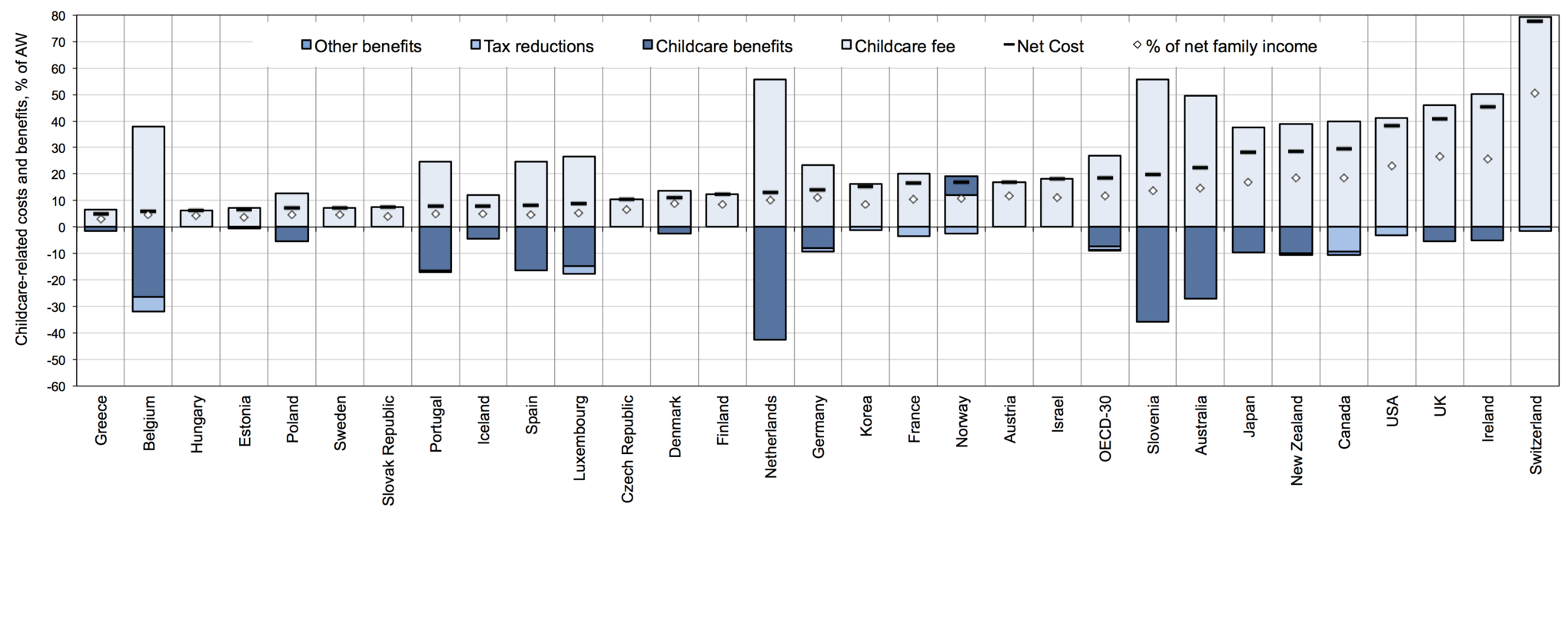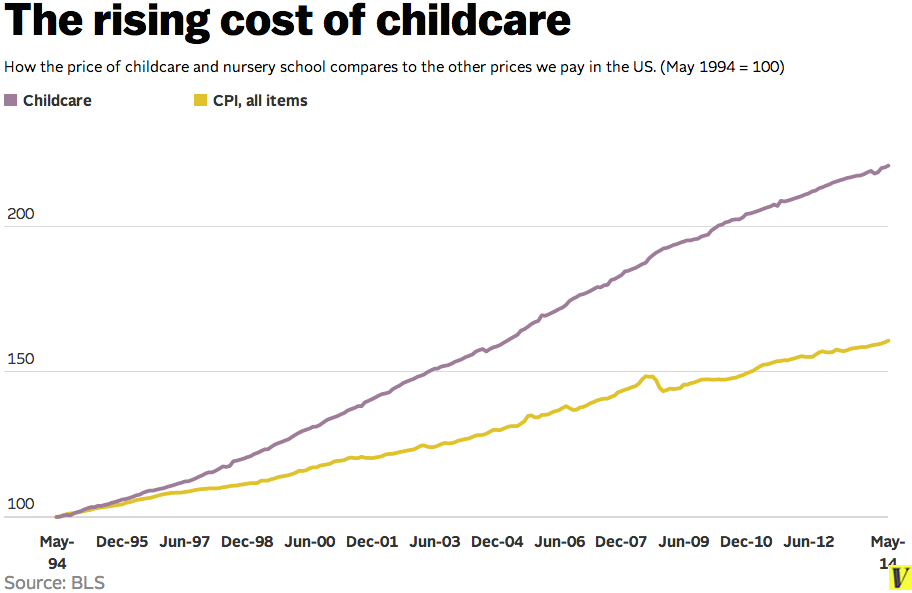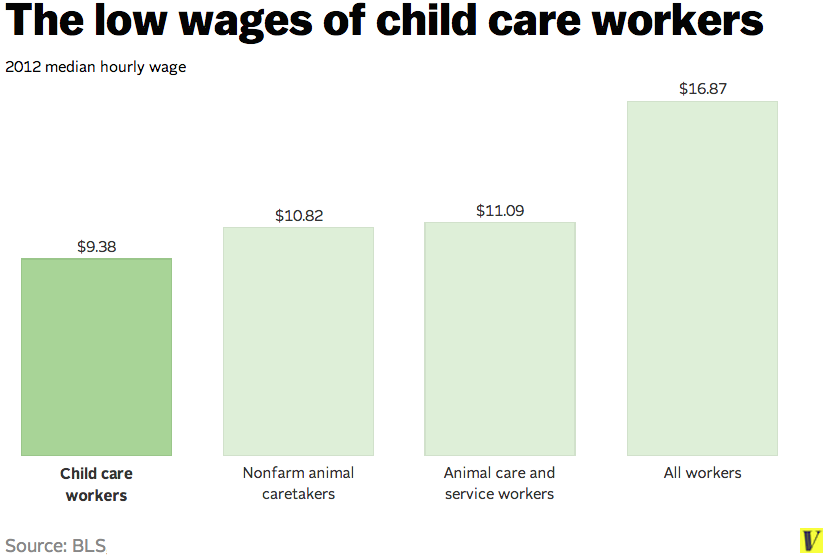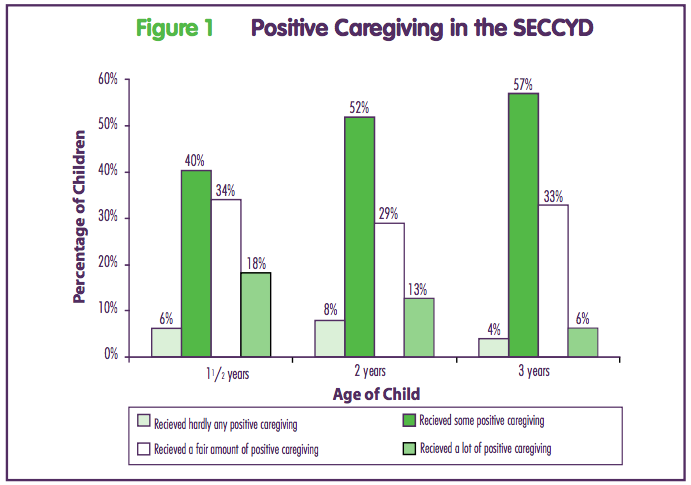/cdn.vox-cdn.com/uploads/chorus_image/image/35698104/481685927.0.jpg)
This week, a single mom working at McDonald's made headlines when she was arrested for letting her daughter play in a nearby park. The incident not only outraged people for unnecessarily putting a child in foster care, but it also highlighted for some commentators that affordable child care remains out of reach for many working moms.
There are many weaknesses to child care in the US. Until children are school-aged, many parents are left to scramble for a way to work without neglecting their children. And many of those families end up paying high prices...often without getting high quality in return.
Below are 5 charts that show some of the problems at work in the US child care market.
1. US parents pay a high share of their incomes on child care.
Compared to other highly developed nations, the US has some high child care costs. The below chart from the OECD finds that the US has the fourth-highest net child care cost out of all OECD nations, as a percentage of a family's income — represented by the black dashes in each bar.

Source: OECD
(Family income in this chart is considered 167 percent of the average wage — so it assumes a two-parent family, with either one or both parents making a below-average wage.)
It's a great reason to thank heavens you don't live in Switzerland, but it also shows that Americans are paying a high premium to get someone to watch the kids. Countries like Belgium, the Netherlands, Slovenia, and Australia all have child care that is as expensive as or more expensive than that in the US; they just also have larger government benefits for child care. As Think Progress reported earlier this year, public assistance for child care has hit its lowest point since 2002.
In addition, there's something this chart doesn't capture: state-provided child care. France's creche system, for example, is often cited as a model for freeing up parents (and their money). And that system is often credited with sending more women into the workforce.
2. Child care is getting more expensive all the time.

The cost of child care is growing at nearly twice the rate of prices economy-wide, as Vox reported in June. If you set the CPI for both child care and all items at 100 as of May 1994, the CPI as of 2014 had climbed around 60 points, whereas child care had grown double that.
What's behind that rise isn't entirely clear. It could be strict licensing requirements and other regulations, alongside increased demand for licensed child care professionals — which is understandable, as parents naturally want the best providers for their kids. Labor is also a big cost in child care, in part because some states will only allow there to be so many children per worker in a facility.
3. Child care workers are very, very low-paid (and don't stick around that long)
Here's an irony of American child care: it's prohibitively expensive for many families, yet its workers are some of the lowest-paid in the nation, earning only $9.38 per hour, or $19,500 per year.

It's not that child care workers necessarily need to make the median income, but a raise could help. The people taking care of America's children earn less than those taking care of America's animals, as the Wall Street Journal noted in April.
And that pay is likely one reason for the industry's high turnover. Turnover among child care workers is 25 to 40 percent, according to a 2012 report from the National Association of Child Care Resource & Referral Agencies. Higher turnover can mean less-experienced workers, which means lower-quality care.
4. That child care often isn't high-quality
There is all sorts of evidence of problems in the US child care market — look no further than the New Republic's excellent 2013 article for examples. One 2007 study from the NIH cited in that article found that fewer than 10 percent of American children receive "very high-quality child care," as measured in terms of what is called "positive caregiving."

Source: NIH
That "positive caregiving" is one measure of quality of caregiving, taking into account how caregivers interact with kids — how they talk to kids, how often they read to children, and whether they respond to the children. That incidence of very high-quality caregiving also seems to fall as children get older.
5. Labor force participation

American women's labor force participation rate has been falling off in recent years, after decades of growth as waves women entered the labor force. One reason for that decline may be that many women have to stay home with their kids instead of shelling out for expensive child care. As Vox's Matt Yglesias reported in May, using France as a foil suggests that readily available, affordable child care has allowed French women to get back to work post-downturn more readily than US women.
There is ample evidence that child care plays a part in whether women work. According to one 2013 study, married women with children who live near their mothers and mothers-in-law have 4 to 10 percentage points higher labor force participation rates than their peers. Many other studies over the years (on mothers both within and outside the US) have also found links between child care availability and women's working patterns.